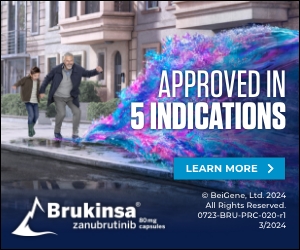MINNEAPOLIS — Because adults with chronic lower respiratory disease (CLRD) suffer from tobacco-related health issues, they sometimes have greater motivation to quit smoking. But that is not always the case, according to a report in the Annals of the American Thoracic Society.1
Minneapolis VA Health Care System-led researchers pointed out that few studies have examined differences in tobacco treatment response between smokers with and without CLRD.
As a result, the team examined the effectiveness of a proactive outreach program for cessation among smokers with and without CLRD. That included subgroup analysis of the Veterans VICTORY Over Tobacco Study, a pragmatic randomized controlled trial that demonstrated the effectiveness of proactive outreach and the choice of tobacco treatments compared to usual care.
The electronic medical record was used to identify smokers, who were proactively offered phone-based counselling and care coordination to receive medication from their VA providers, or in-person care. Participants were predominantly older, white, male smokers. The response among those with and without an ICD-9 diagnosis of a CLRD—chronic obstructive pulmonary disease, chronic bronchitis, emphysema, asthma—was compared.
With 19.6% of the study group having CLRD, 3,307 had outcome data with the following assignments to the intervention:
- 1,272 without CLRD in proactive care;
- 301 with CLRD in proactive care;
- 1,387 without CLRD in usual care; and
- 347 with CLRD in usual care.
Results indicated that, among patients with CLRD, 13.1% in the Proactive group reported six-month prolonged abstinence, compared to 8.7% of those in the Usual Care group (odds ratio=1.57, 95%CI 0.93-2.65).
Among those without CLRD, 13.1% quit in the Proactive group compared to 11.0% in the Usual Care group (odds ratio 1.22, 95%CI 0.95-1.55), according to the study.
Researchers reported that, in adjusted analyses, the association between treatment arm and quit rate varied by the presence of CLRD, with a stronger association between allocation to the Proactive group and quit rate among those with CLRD (odds ratio 3.45, 95%CI 1.59-7.47) compared to those without CLRD (odds ratio 1.34, 95%CI 0.95-1.88; p for interaction with CLRD = 0.03).
“Smokers with CLRD may be more likely to respond to a proactive outreach intervention for tobacco cessation treatment than those without CLRD,” the study authors concluded.
1Melzer AC, Clothier B, Japuntich SJ, Noorbaloochi S, Hammett P, Burgess DJ, Joseph AM, Fu SS Md. Comparative Effectiveness of Proactive Tobacco Treatment among Smokers with and without Chronic Lower Respiratory Disease. Ann Am Thorac Soc. 2017 Nov 16. doi: 10.1513/AnnalsATS.201707-582OC. [Epub ahead of print] PubMed PMID: 29144886

